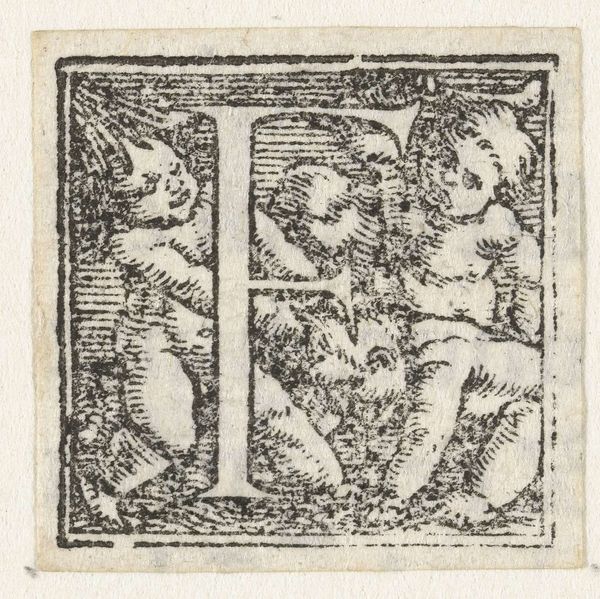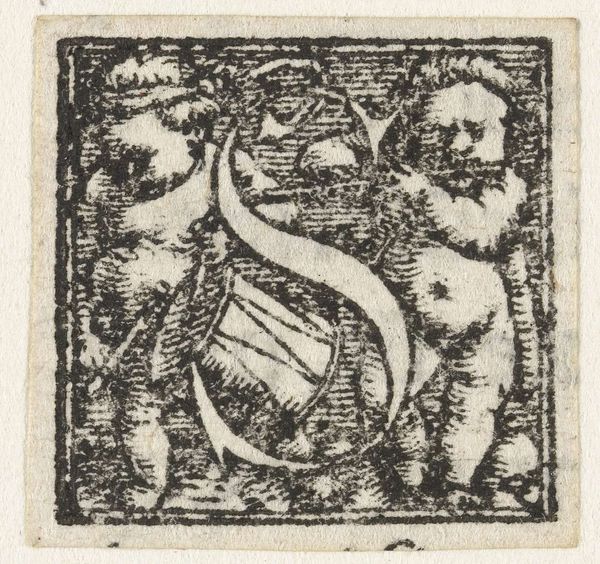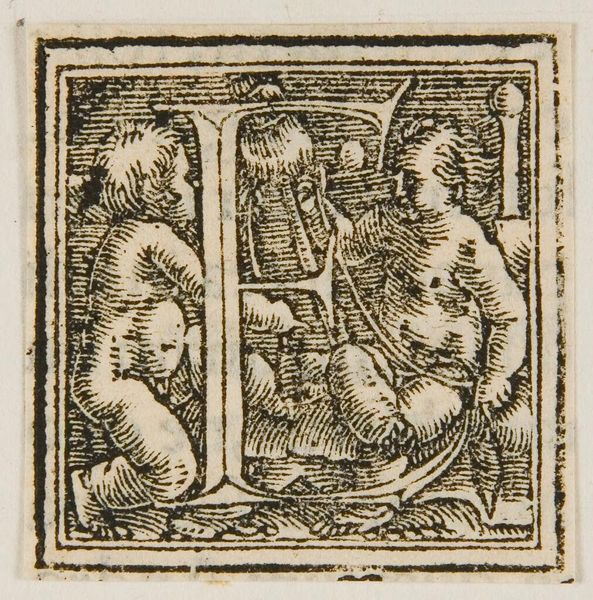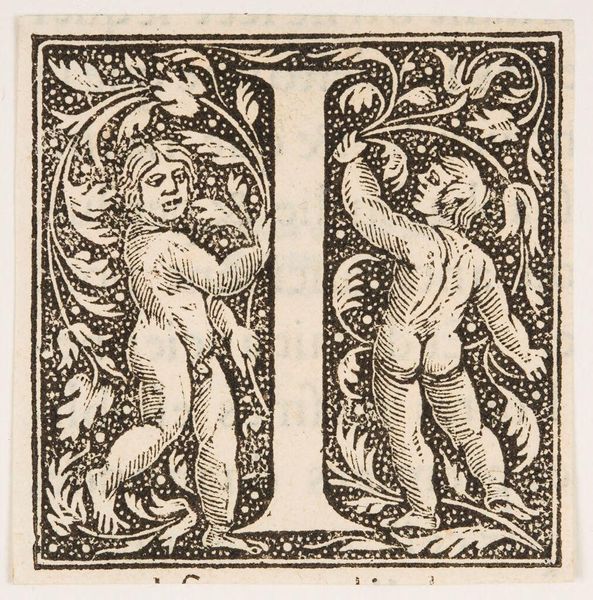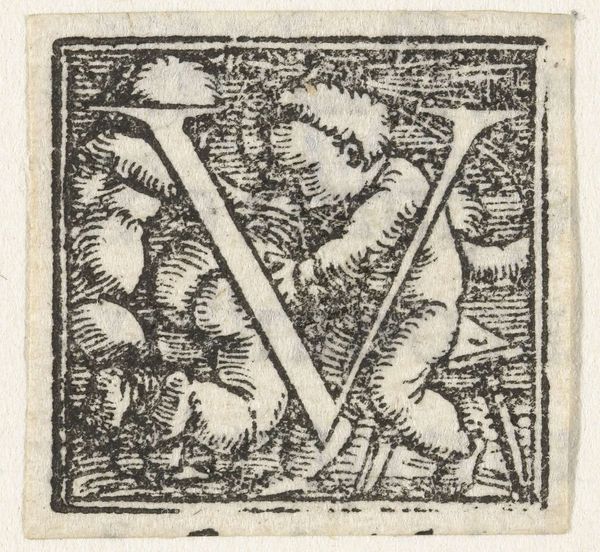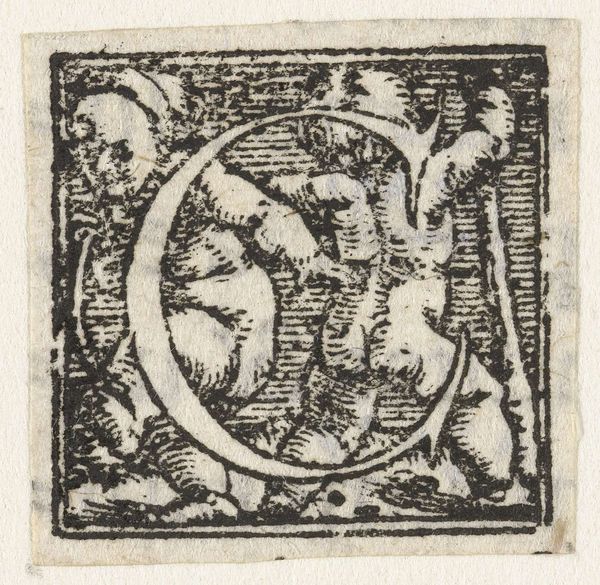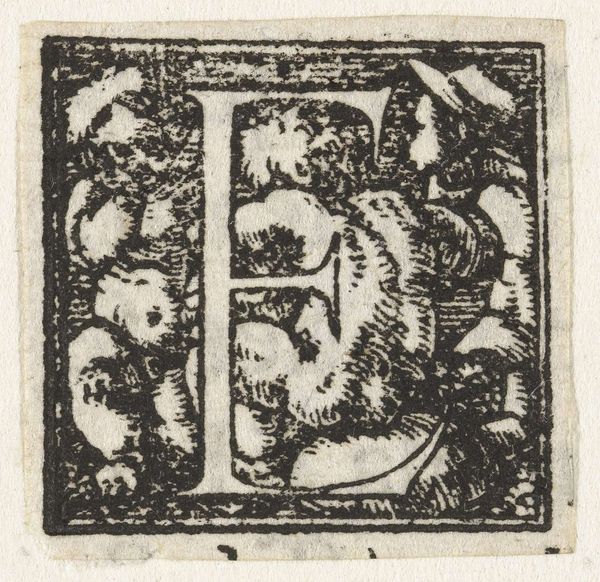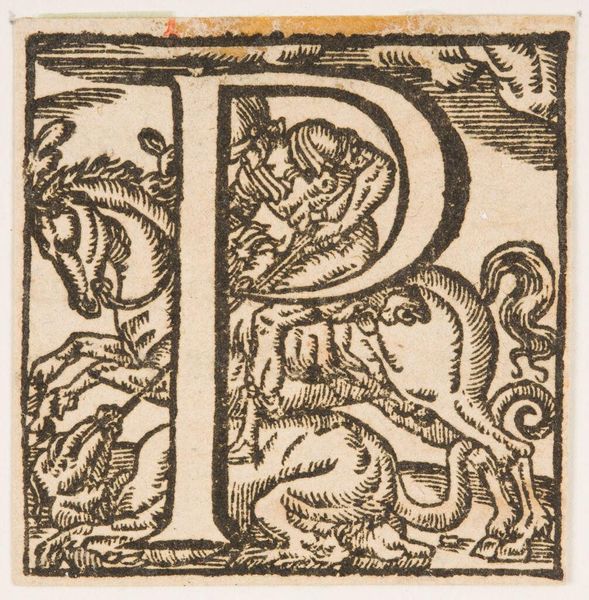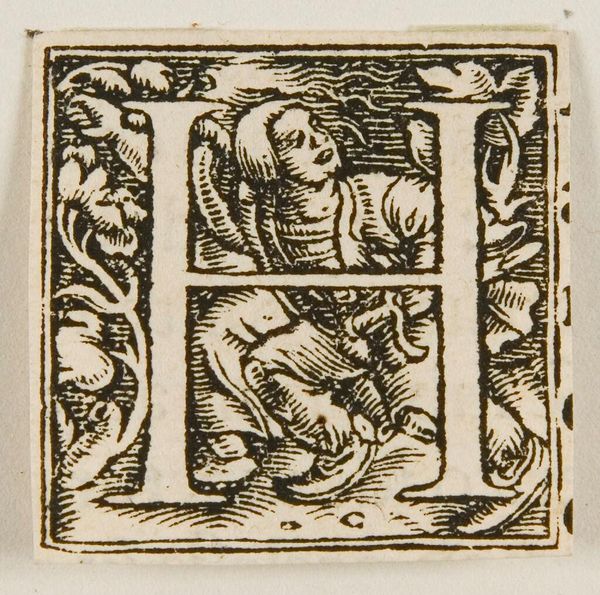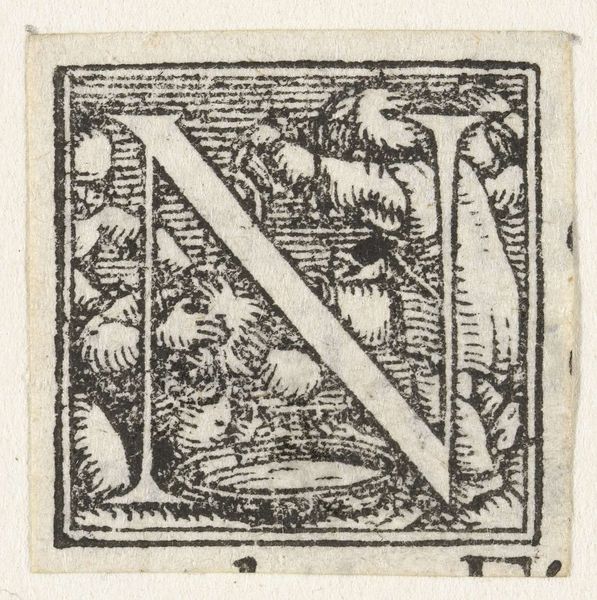
print, woodcut, engraving
# print
#
old engraving style
#
figuration
#
child
#
woodcut
#
northern-renaissance
#
engraving
Dimensions: height 18 mm, width 18 mm
Copyright: Rijks Museum: Open Domain
Editor: This is "Letter I met twee kinderen op stokpaardjes," or "Letter I with two children on hobbyhorses," a woodcut and engraving by Hans Holbein the Younger from the 1520s. It’s a small, playful scene, but something about the dense cross-hatching makes it feel heavier than I expected. What do you see in this piece? Curator: Well, beyond the literal depiction, I see layers of symbolic meaning embedded in this seemingly simple letter 'I'. Consider the children on hobbyhorses – these aren’t just toys; they represent youthful energy and perhaps the early stages of life’s journey. This imagery harkens back to medieval traditions. How might the letter itself, standing tall and unadorned between them, play into this? Editor: Is the letter I an "axis mundi" perhaps? Connecting child past with future, so to speak? Curator: Precisely! The 'I' anchors the composition, suggesting individuality and the self, framed by innocence and burgeoning adventure. Also, note how Holbein uses stark contrast. Light and shadow dance across the forms. This evokes a feeling of fleeting moments of childhood delight, shadowed by life’s uncertainties. Do you see anything in the costumes of the children? Editor: Their costumes, yes, look less like typical Renaissance children and more like miniature adults. It’s as though they’re already playing the roles society expects of them. Curator: Exactly. They're in costume, acting out parts. They haven't figured out themselves. Childhood is over too soon. Also, remember that Holbein was working during a time of massive social and religious upheaval. Do you think that had anything to do with the children’s outfits? Editor: I do. That kind of explains the heaviness. The engraving itself, I mean, is very light. So there is a deep contrast happening on two layers: not just shadow play but childhood fun, yes, as overshadowed by serious realities. I had not seen it that way at first. Thank you. Curator: It's always rewarding to uncover these echoes of history and cultural memory within art. Holbein uses children to invite questions about identity and mortality.
Comments
No comments
Be the first to comment and join the conversation on the ultimate creative platform.
